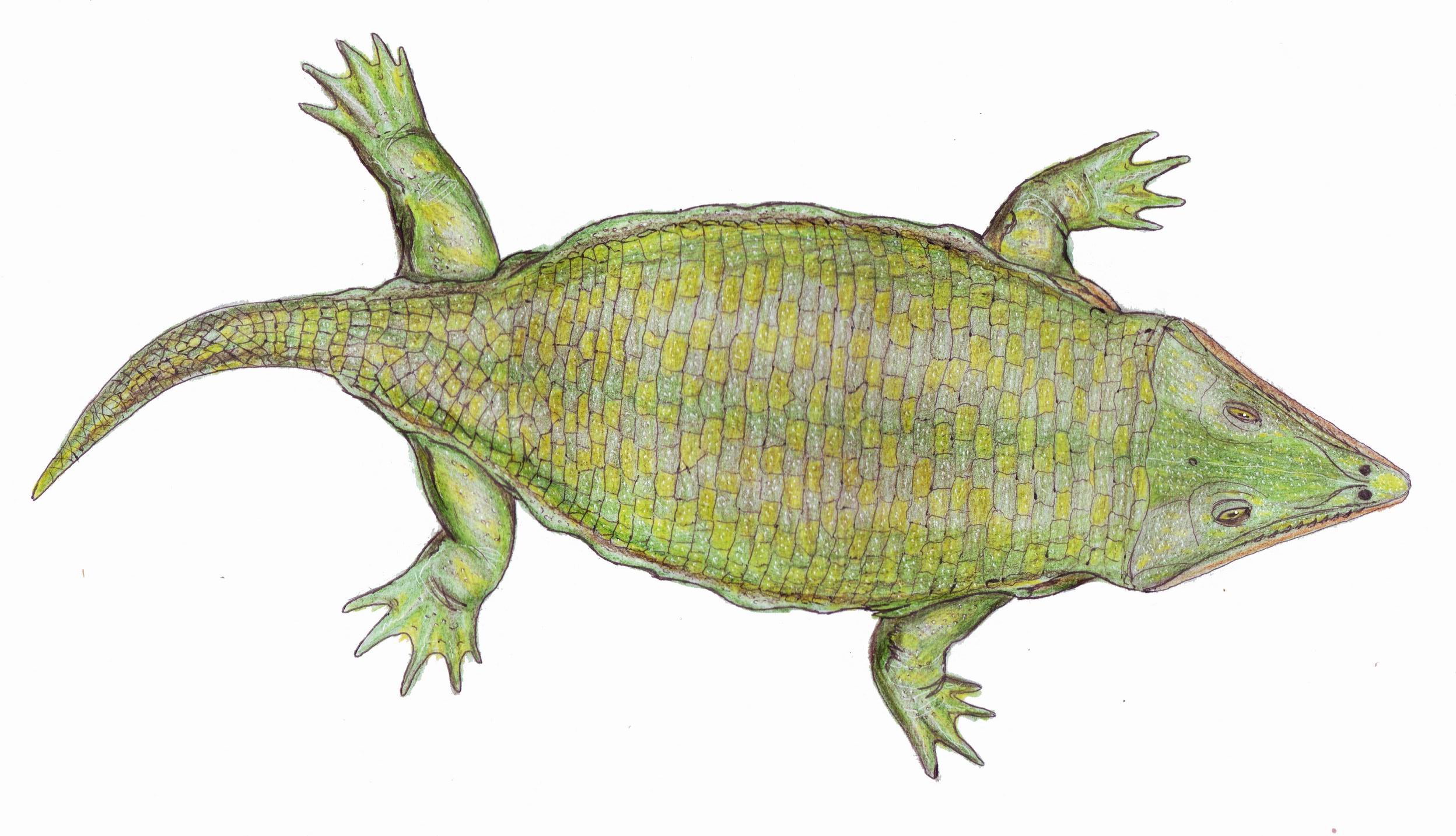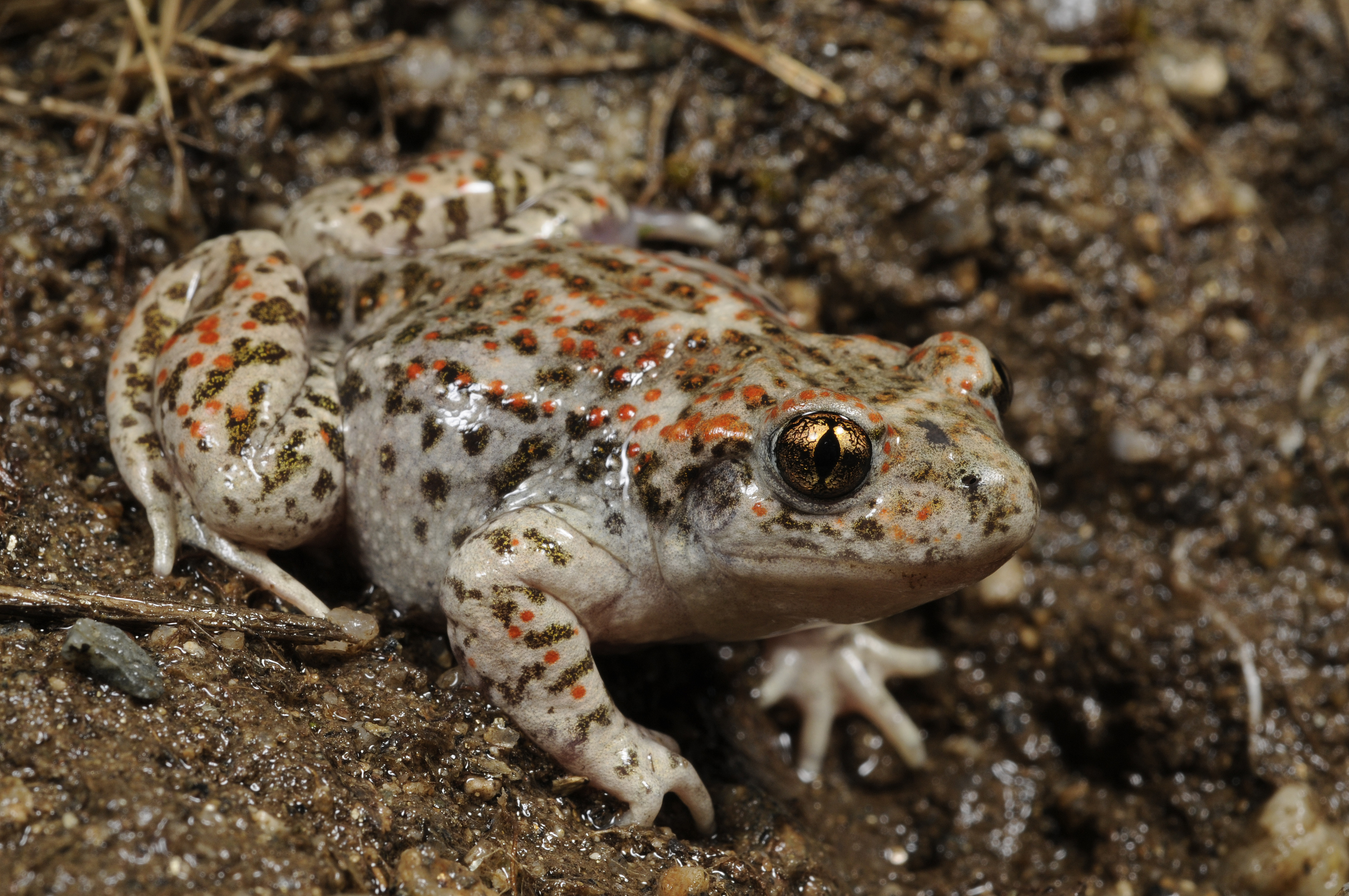|
Altanulia
''Altanulia'' is an extinct genus of prehistoric amphibian. Description The holotype of ''Altanulia'' - PIN 553/300 -, consisting of an isolated 20 mm long maxilla bearing 45-47 teeth, was found by the Soviet-Mongolian Paleontological Expedition in the southern Gobi Desert, Nemegt Formation, and dates from the Upper Cretaceous (Upper Campanian-Lower Maastrichtian). ''Altanulia'' was diagnosed on the basis in the "Posterior part of maxilla deep, with longitudinal wedge-shaped labial depression; pterygoid tubercle of maxilla well expressed; frontal process in anterior part of bone." Classification ''Altanulia'' belongs to the Discoglossidae, due to the shape and structure of the lingual surface of its maxilla. See also * Prehistoric amphibian * List of prehistoric amphibians This list of prehistoric amphibians is an attempt to create a comprehensive listing of all genera from the fossil record that have ever been considered to be amphibians, excluding purely vernacular terms ... [...More Info...] [...Related Items...] OR: [Wikipedia] [Google] [Baidu] |
Prehistoric Amphibian
This list of prehistoric amphibians is an attempt to create a comprehensive listing of all Genus, genera from the fossil record that have ever been considered to be amphibians, excluding purely vernacular terms. The list includes all commonly accepted genera, but also genera that are now considered invalid, doubtful (''nomen dubium, nomina dubia''), or were not formally published (''nomen nudum, nomina nuda''), as well as synonym (zoology), junior synonyms of more established names, and genera that are no longer considered amphibians. Modern forms are excluded from this list. The list currently includes 454 names. Naming conventions and terminology Naming conventions and terminology follow the International Code of Zoological Nomenclature. Technical terms used include: * Synonym (zoology), Junior synonym: A name which describes the same taxon as a previously published name. If two or more genera are formally designated and the type (zoology), type specimens are later assigned to th ... [...More Info...] [...Related Items...] OR: [Wikipedia] [Google] [Baidu] |
Nemegt Formation
The Nemegt Formation (also known as Nemegtskaya Svita) is a geological formation in the Gobi Desert of Mongolia, dating to the Late Cretaceous. The formation consists of river channel sediments and contains fossils of fish, turtles, crocodilians, and a diverse fauna of dinosaurs, including birds. Description The Nemegt Formation is composed of mudstones and sandstones that were deposited by ancient lakes, streams, and flood plains. The Altan Uul locality was described by Michael Novacek as "a canyon carved out of a very rich series of sedimentary rocks" with "steep cliffs and narrow washes". The climate associated with it was wetter than when preceding formations were deposited; there seems to have existed at least some degree of forest cover. Fossilized trunks have been also found. These petrified wood, and the remains of Araucariaceae conifers indicate that the forests of the Nemegt were thickly wooded, with a high canopy formed by tall conifer trees. When examined, the rock ... [...More Info...] [...Related Items...] OR: [Wikipedia] [Google] [Baidu] |
List Of Prehistoric Amphibians
This list of prehistoric amphibians is an attempt to create a comprehensive listing of all genera from the fossil record that have ever been considered to be amphibians, excluding purely vernacular terms. The list includes all commonly accepted genera, but also genera that are now considered invalid, doubtful ('' nomina dubia''), or were not formally published (''nomina nuda''), as well as junior synonyms of more established names, and genera that are no longer considered amphibians. Modern forms are excluded from this list. The list currently includes 454 names. Naming conventions and terminology Naming conventions and terminology follow the International Code of Zoological Nomenclature. Technical terms used include: * Junior synonym: A name which describes the same taxon as a previously published name. If two or more genera are formally designated and the type specimens are later assigned to the same genus, the first to be published (in chronological order) is the senior synon ... [...More Info...] [...Related Items...] OR: [Wikipedia] [Google] [Baidu] |
Early Cretaceous
The Early Cretaceous ( geochronological name) or the Lower Cretaceous (chronostratigraphic name), is the earlier or lower of the two major divisions of the Cretaceous. It is usually considered to stretch from 145 Ma to 100.5 Ma. Geology Proposals for the exact age of the Barremian-Aptian boundary ranged from 126 to 117 Ma until recently (as of 2019), but based on drillholes in Svalbard the defining early Aptian Oceanic Anoxic Event 1a (OAE1a) was carbon isotope dated to 123.1±0.3 Ma, limiting the possible range for the boundary to c. 122–121 Ma. There is a possible link between this anoxic event and a series of Early Cretaceous large igneous provinces (LIP). The Ontong Java-Manihiki-Hikurangi large igneous province, emplaced in the South Pacific at c. 120 Ma, is by far the largest LIP in Earth's history. The Ontong Java Plateau today covers an area of 1,860,000 km2. In the Indian Ocean another LIP began to form at c. 120 Ma, the Kerguelen P ... [...More Info...] [...Related Items...] OR: [Wikipedia] [Google] [Baidu] |
Genus
Genus ( plural genera ) is a taxonomic rank used in the biological classification of extant taxon, living and fossil organisms as well as Virus classification#ICTV classification, viruses. In the hierarchy of biological classification, genus comes above species and below family (taxonomy), family. In binomial nomenclature, the genus name forms the first part of the binomial species name for each species within the genus. :E.g. ''Panthera leo'' (lion) and ''Panthera onca'' (jaguar) are two species within the genus ''Panthera''. ''Panthera'' is a genus within the family Felidae. The composition of a genus is determined by taxonomy (biology), taxonomists. The standards for genus classification are not strictly codified, so different authorities often produce different classifications for genera. There are some general practices used, however, including the idea that a newly defined genus should fulfill these three criteria to be descriptively useful: # monophyly – all descendants ... [...More Info...] [...Related Items...] OR: [Wikipedia] [Google] [Baidu] |
Amphibian
Amphibians are tetrapod, four-limbed and ectothermic vertebrates of the Class (biology), class Amphibia. All living amphibians belong to the group Lissamphibia. They inhabit a wide variety of habitats, with most species living within terrestrial animal, terrestrial, fossorial, arboreal or freshwater aquatic ecosystems. Thus amphibians typically start out as larvae living in water, but some species have developed behavioural adaptations to bypass this. The young generally undergo metamorphosis from larva with gills to an adult air-breathing form with lungs. Amphibians use their skin as a secondary respiratory surface and some small terrestrial salamanders and frogs lack lungs and rely entirely on their skin. They are superficially similar to reptiles like lizards but, along with mammals and birds, reptiles are amniotes and do not require water bodies in which to breed. With their complex reproductive needs and permeable skins, amphibians are often ecological indicators; in re ... [...More Info...] [...Related Items...] OR: [Wikipedia] [Google] [Baidu] |
Gobi Desert
The Gobi Desert (Chinese: 戈壁 (沙漠), Mongolian: Говь (ᠭᠣᠪᠢ)) () is a large desert or brushland region in East Asia, and is the sixth largest desert in the world. Geography The Gobi measures from southwest to northeast and from north to south. The desert is widest in the west, along the line joining the Lake Bosten and the Lop Nor (87°–89° east). In 2007, it occupied an arc of land in area. In its broadest definition, the Gobi includes the long stretch of desert extending from the foot of the Pamirs (77° east) to the Greater Khingan Mountains, 116–118° east, on the border of Manchuria; and from the foothills of the Altay, Sayan, and Yablonoi mountain ranges on the north to the Kunlun, Altyn-Tagh, and Qilian mountain ranges, which form the northern edges of the Tibetan Plateau, on the south. A relatively large area on the east side of the Greater Khingan range, between the upper waters of the Songhua (Sungari) and the upper waters of the Liao-h ... [...More Info...] [...Related Items...] OR: [Wikipedia] [Google] [Baidu] |
Discoglossidae
The Alytidae are a family of primitive frogs. Their common name is painted frogs or midwife toads. Most are endemic to Europe, but three species occur in northwest Africa, and a species formerly thought to be extinct is found in Israel. This family is also known as Discoglossidae, but the older name Alytidae has priority and is now recognized by major reference works. Some researchers, though, suggest that '' Alytes'' and ''Discoglossus'' are different enough to be treated as belonging to separate families, implying resurrection of the Discoglossidae. The term "discoglossid" has also been used to refer to many primitive fossil frogs that share plesiomorphic (ancestral) similities to alytids, but that are probably not closely related. Genera and species The family contains three extant genera, '' Alytes'', ''Discoglossus'', and '' Latonia''. The first is somewhat toad-like and can often be found on land. The second is smoother and more frog-like, preferring the water. The third ... [...More Info...] [...Related Items...] OR: [Wikipedia] [Google] [Baidu] |
Cretaceous Frogs
The Cretaceous ( ) is a geological period that lasted from about 145 to 66 million years ago (Mya). It is the third and final period of the Mesozoic Era, as well as the longest. At around 79 million years, it is the longest geological period of the entire Phanerozoic. The name is derived from the Latin ''creta'', "chalk", which is abundant in the latter half of the period. It is usually abbreviated K, for its German translation ''Kreide''. The Cretaceous was a period with a relatively warm climate, resulting in high eustatic sea levels that created numerous shallow inland seas. These oceans and seas were populated with now-extinct marine reptiles, ammonites, and rudists, while dinosaurs continued to dominate on land. The world was ice free, and forests extended to the poles. During this time, new groups of mammals and birds appeared. During the Early Cretaceous, flowering plants appeared and began to rapidly diversify, becoming the dominant group of plants across the Earth by th ... [...More Info...] [...Related Items...] OR: [Wikipedia] [Google] [Baidu] |



.png)


